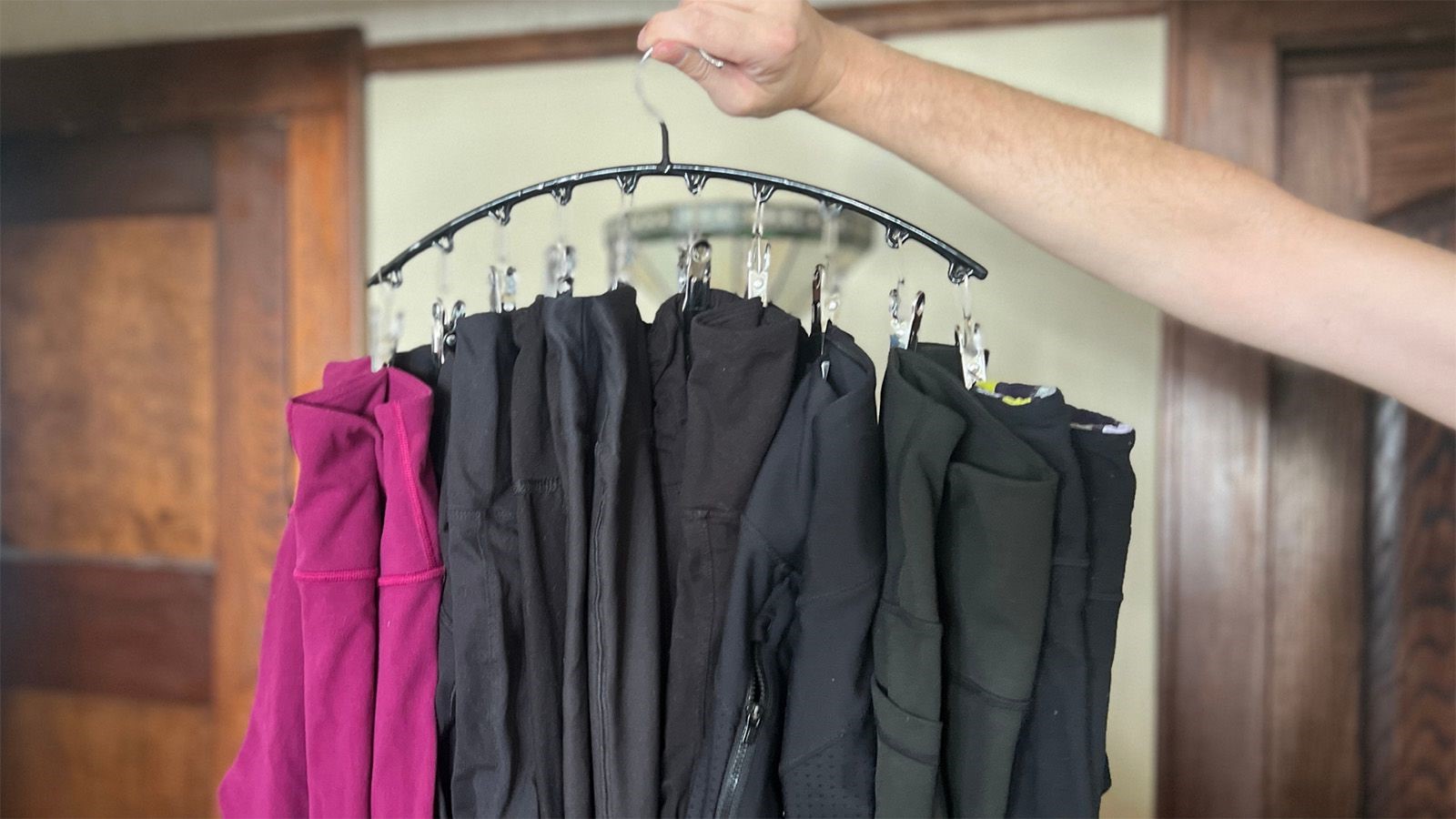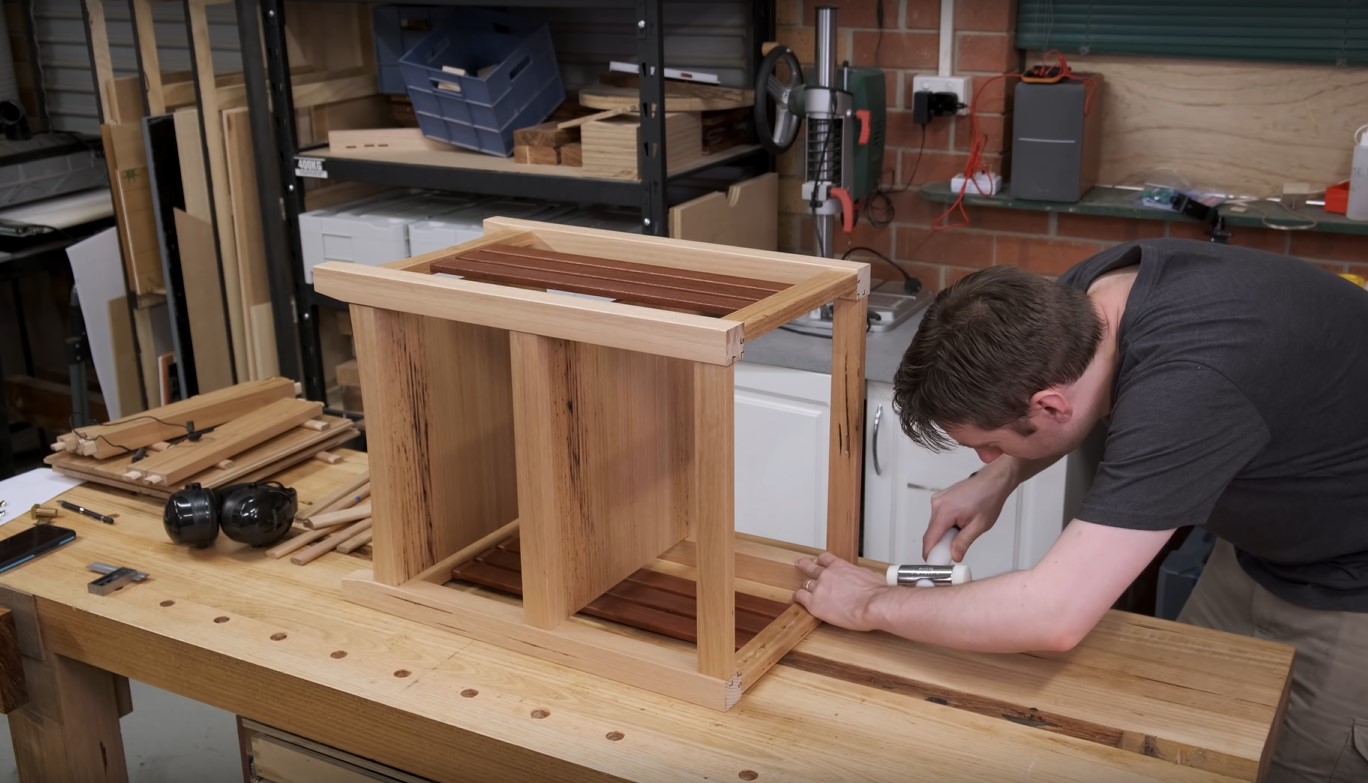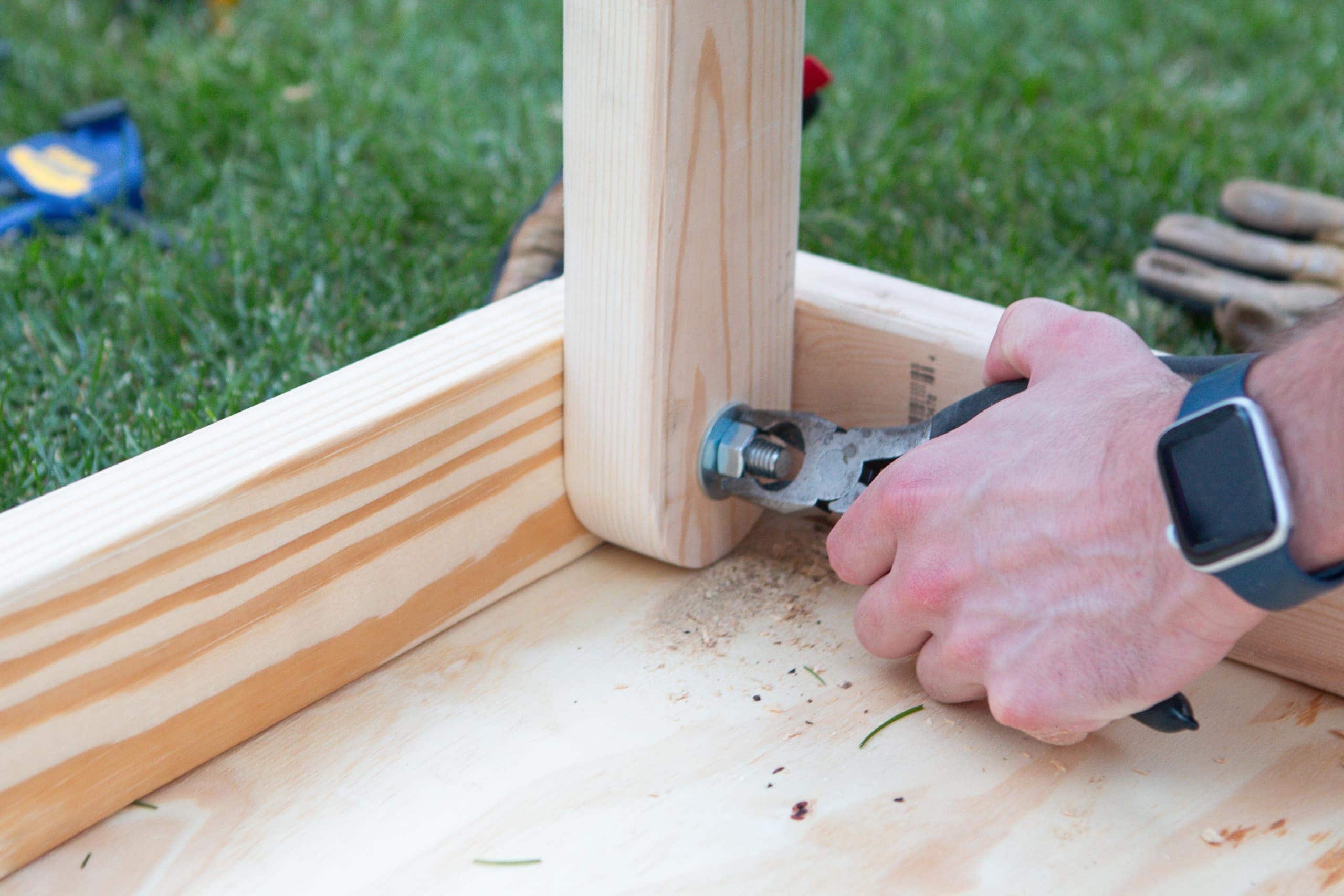

Articles
How To Store Prosciutto Leg
Modified: December 7, 2023
Learn how to properly store a prosciutto leg to keep it fresh and delicious. Our informative articles provide valuable tips and techniques for preserving this gourmet delicacy.
(Many of the links in this article redirect to a specific reviewed product. Your purchase of these products through affiliate links helps to generate commission for Storables.com, at no extra cost. Learn more)
Introduction
Prosciutto leg is a delicious and delicate Italian cured meat that is highly valued for its rich flavor and tender texture. Whether you have purchased a whole prosciutto leg or received one as a gift, proper storage is essential to preserve its quality and flavor. Storing a prosciutto leg requires careful attention to temperature and humidity control, as well as proper packaging and monitoring.
In this article, we will guide you through the process of storing a prosciutto leg to ensure its longevity and maintain its exceptional taste. From choosing the right prosciutto leg to selecting the ideal storage location, we will provide you with the necessary information to keep your prosciutto leg in top condition.
So, let’s dive in and discover the secrets to successfully storing a prosciutto leg!
Key Takeaways:
- Choose a high-quality prosciutto leg from reputable sources, inspect its appearance and aroma, and consider factors like weight and age to ensure a delightful and successful storage experience.
- Properly prepare, wrap, and package the prosciutto leg, select an ideal storage location with controlled temperature and humidity, and monitor its condition to preserve its exceptional flavors and textures.
Read more: How To Store Prosciutto
Choosing the Right Prosciutto Leg
When it comes to storing a prosciutto leg, the first step is selecting a high-quality leg to begin with. Here are some tips on choosing the right prosciutto leg:
- Source: Look for prosciutto legs that come from reputable producers and have been properly cured. It is essential to choose a leg from a trusted source to ensure its flavor, texture, and safety.
- Appearance: Examine the prosciutto leg’s appearance. It should have a deep red color, evenly distributed fat marbling, and a firm texture. Avoid legs with any signs of discoloration or excessive dryness.
- Aroma: Give the prosciutto leg a sniff. It should have a pleasant, slightly sweet aroma. Avoid legs with any off or rancid odors.
- Weight: Consider the weight of the prosciutto leg. Lighter legs tend to be drier and have a more intense flavor, while heavier legs have a higher moisture content and a milder taste. Choose according to your personal preference.
- Age: Determine the age of the prosciutto leg. Generally, the longer it has been cured, the more intense the flavor. However, if you prefer a milder taste, opt for a younger leg.
By carefully considering these factors, you can ensure that you are starting with a high-quality prosciutto leg, which will greatly contribute to successful storage and a delightful taste.
Preparing the Prosciutto Leg for Storage
Before you proceed with storing the prosciutto leg, it is crucial to properly prepare it to maximize its shelf life and maintain its taste. Follow these steps to prepare the prosciutto leg for storage:
- Clean and inspect: Start by cleaning the prosciutto leg to remove any dirt or debris. Gently wipe the leg with a damp cloth. Then, inspect the leg to ensure there are no visible signs of mold or spoilage. If you notice any, discard the leg as it may not be safe for consumption.
- Trim excess fat: Trimming the excess fat from the prosciutto leg is an important step. Use a sharp knife to carefully remove any thick layers of fat, keeping a thin layer intact to enhance the flavor during the curing process.
- Bone removal: If desired, you can remove the bone from the prosciutto leg. This step is optional and depends on personal preference. Removing the bone can make it easier to wrap and store the leg, but it may also affect the traditional appearance and potential uses of the leg.
- Apply curing ingredients: Next, apply any necessary curing ingredients, such as salt or a cure mixture, according to the specific instructions provided by the producer or your recipe. This step is important for enhancing the flavor and preserving the prosciutto leg.
- Air-dry: Allow the prosciutto leg to air-dry for a short period of time before wrapping and storing it. This step helps to further reduce moisture and promote the development of desired flavors and textures.
By following these preparation steps, you are setting the prosciutto leg up for successful storage and delicious results. Now that the leg is ready, it’s time to move on to the wrapping and packaging process.
Wrapping and Packaging the Prosciutto Leg
Once you have prepared the prosciutto leg, it’s important to wrap and package it properly to protect it from air, moisture, and contaminants. Here’s how you can effectively wrap and package your prosciutto leg:
- Start with parchment paper: Begin by laying out a sheet of parchment paper or a similar food-safe wrapping material. This will serve as the base layer for wrapping the prosciutto leg.
- Wrap tightly: Carefully place the prosciutto leg on the parchment paper and start wrapping it tightly. Ensure that the leg is completely covered and sealed to prevent any exposure to air or moisture. The tight wrapping helps to retain the flavor and moisture within the leg.
- Securing with twine or butcher’s paper: After wrapping the prosciutto leg with parchment paper, you can further secure it by tying it with cooking twine or wrapping it with butcher’s paper. This extra layer of protection helps to keep the leg in place and maintain its shape during storage.
- Seal in a vacuum-sealed bag: For added protection and to extend the shelf life of the prosciutto leg, you can place it in a vacuum-sealed bag. This removes excess air and creates a vacuum, preventing any potential oxygen exposure that could lead to spoilage.
- Label and date: Finally, make sure to label the prosciutto leg with the date of packaging. This will help you keep track of its age and ensure that you consume it within the recommended time frame.
By following these wrapping and packaging steps, you can safeguard your prosciutto leg and maintain its quality throughout the storage period. Now that the leg is securely wrapped, let’s move on to selecting the ideal storage location.
Selecting the Storage Location
Choosing the right storage location for your prosciutto leg is crucial to maintain its quality and prevent any spoilage or loss of flavor. Here are some factors to consider when selecting the ideal storage location:
- Cool and dark: The storage area should be cool and dark, as exposure to light and high temperatures can negatively impact the quality of the prosciutto leg. Look for a location away from direct sunlight and sources of heat.
- Well-ventilated: Good air circulation is essential to prevent condensation and the growth of mold. Ensure that the storage area is well-ventilated to maintain appropriate humidity levels.
- Low humidity: A humidity level of around 60-70% is ideal for storing prosciutto. Higher levels of humidity can promote mold growth, while lower levels can cause the leg to dry out excessively.
- Avoid odors: The storage area should be free from strong odors and other foods, as the prosciutto leg can absorb unwanted flavors. Keep it separate from pungent ingredients to preserve its distinct taste.
- Stable temperature: Fluctuating temperatures can impact the aging process of the prosciutto leg. Aim for a stable temperature between 50-60°F (10-15°C).
Consider these factors when selecting the storage location to ensure optimal conditions for your prosciutto leg. Ideal storage options may include a cool pantry, a cellar, or a temperature-controlled refrigerator or curing chamber if available.
Now that you have chosen the right storage location, it’s essential to understand the importance of temperature and humidity control to maintain the prosciutto leg’s quality. Let’s explore this in detail in the next section.
Store prosciutto leg in a cool, dry place with good air circulation. Wrap it in a clean cloth or butcher paper, and store it in the refrigerator for up to 2-3 months. Alternatively, you can hang it in a cool, dry area for up to 6 months.
Read more: How To Store Prosciutto After Opening
Temperature and Humidity Control
Temperature and humidity control are crucial for preserving the quality and flavor of your prosciutto leg during storage. Here’s what you need to know about maintaining the ideal temperature and humidity:
- Temperature: The ideal storage temperature for prosciutto is between 50-60°F (10-15°C). This temperature range slows down the aging process and prevents the leg from drying out too quickly or developing off-flavors.
- Humidity: Prosciutto requires a controlled level of humidity to ensure it doesn’t dry out or become too damp. Aim for a humidity level of around 60-70%. This range helps maintain the leg’s texture and prevents mold growth.
- Curing chamber: If you have access to a curing chamber, it provides an ideal environment for storing prosciutto. These chambers allow precise control over temperature and humidity levels, creating optimal conditions for the leg to age properly.
- Refrigerator storage: If using a refrigerator for storage, ensure that it has an adjustable humidity drawer. Place the prosciutto leg in the drawer and set the humidity level to around 60-70%. Regularly monitor the temperature to ensure it stays within the recommended range.
- Periodic checks: Regularly monitor the temperature and humidity levels of the storage environment. Use a thermometer and hygrometer to ensure they remain within the desired range. Make adjustments as needed to maintain optimal conditions.
By controlling and maintaining the proper temperature and humidity levels, you can ensure that your prosciutto leg ages gracefully and retains its exceptional flavors. Next, let’s discuss the importance of monitoring and maintaining the prosciutto leg during storage.
Monitoring and Maintaining the Prosciutto Leg
While your prosciutto leg is in storage, it’s important to regularly monitor and maintain its condition to ensure its longevity and flavor. Here are some key steps to follow:
- Check for mold: Periodically inspect the prosciutto leg for any signs of mold growth. If you notice any mold, remove it immediately by gently wiping the affected area with a cloth dampened with vinegar or wine. Mold growth can occur if the humidity is too high or if there is excessive moisture on the leg.
- Rotate and rewrap: Every few weeks, it is recommended to rotate the prosciutto leg and rewrap it with fresh parchment paper and butcher’s paper. This helps ensure even aging and distribution of flavors.
- Remove any excess moisture: If you notice excess moisture on the prosciutto leg or in the wrapping, gently pat it dry with a clean cloth. Excessive moisture can lead to spoilage or unpleasant flavors.
- Adjust temperature and humidity: Continuously monitor the temperature and humidity levels in the storage area and make necessary adjustments if needed. Keep in mind that slight fluctuations are natural, but strive to maintain the recommended ranges.
- Length of storage: The optimal storage time for a prosciutto leg can vary depending on factors such as its size, fat content, and personal preference. Most prosciutto legs are aged for a minimum of 12 months, but some may be aged for up to 36 months or more for a more intense flavor.
By regularly monitoring and maintaining your prosciutto leg, you can ensure its quality and enjoy the flavorful rewards of your careful storage efforts. Now, let’s explore some additional tips and tricks for proper prosciutto leg storage.
Length of Storage
The length of storage for a prosciutto leg can vary depending on several factors, including personal preference and the desired flavor profile. Generally, prosciutto legs are aged for a minimum of 12 months, but some legs may be stored for longer periods, up to 36 months or more.
The aging process is crucial for developing the distinctive flavors and texture of prosciutto. During this time, the leg gradually loses moisture and undergoes enzymatic and microbial changes, resulting in a concentrated and complex taste.
Shorter aging periods, around 12-14 months, typically produce a more delicate and milder flavor. These legs are often preferred for slicing thinly and enjoying as is. On the other hand, longer aging periods, such as 18-24 months or more, result in a more intense and robust flavor. These legs are perfect for adding depth to recipes or enjoying in small, savory bites.
It’s important to note that the length of storage can also depend on the size and fat content of the prosciutto leg. Large legs with higher fat content tend to require longer aging periods to reach their full potential. Additionally, personal taste preferences play a significant role in determining the ideal storage duration.
When storing a prosciutto leg, it is recommended to consult with the producer or follow specific guidelines provided with the leg to ensure you achieve the desired flavor profile. Regularly monitor the prosciutto leg during storage and conduct taste tests along the way to determine when it has reached your preferred level of flavor development.
By understanding the factors that influence the length of storage and tailoring it to your preferences, you can savor the exceptional flavors of your prosciutto leg. As we conclude, let’s recap some additional tips and tricks for proper prosciutto leg storage.
Tips and Tricks for Proper Prosciutto Leg Storage
To ensure the best storage conditions for your prosciutto leg and maximize its flavor and longevity, here are some helpful tips and tricks to follow:
- Properly label and date: Always label the prosciutto leg with the date it was packaged. This helps you keep track of its aging process and ensures you consume it within the recommended time frame.
- Avoid excessive handling: Limit the amount of handling the prosciutto leg undergoes during storage. Excessive touching can transfer unwanted flavors and compromise the leg’s quality.
- Store in smaller portions: If you have a large prosciutto leg, consider slicing and storing it in smaller portions. This allows you to enjoy the leg over an extended period without exposing the whole leg to air and moisture.
- Use a clean blade: When slicing the prosciutto leg, use a clean and sharp knife. This ensures clean cuts and prevents unnecessary damage to the leg.
- Save the bone: If you removed the bone from the prosciutto leg, save it for making flavorful stocks or broths. The bone adds depth and richness to soups and sauces.
- Frequent inspections: Regularly inspect the prosciutto leg for any signs of spoilage, mold, or rancidity. Catching any issues early on can prevent contamination and ensure the leg remains safe to consume.
- Proper storage containers: If using containers for storing sliced prosciutto, choose airtight containers that can maintain the desired humidity level and prevent exposure to air.
- Wrap opened slices: If you have opened slices of prosciutto, wrap them tightly in plastic wrap or place them in a resealable bag to prevent them from drying out.
- Share and enjoy: Prosciutto is best enjoyed when shared with family and friends. Cut thin slices, arrange them on a platter, and serve with crusty bread, melon, or your favorite accompaniments.
By incorporating these tips into your prosciutto leg storage routine, you can ensure optimal conditions and maintain the exquisite flavors of this beloved Italian delicacy for an extended period.
As we come to the end of our guide on storing a prosciutto leg, we hope that these tips and tricks have provided you with valuable insights to preserve and savor the exceptional taste of prosciutto. Enjoy your prosciutto leg, and remember to appreciate the time and effort that goes into creating this gourmet delight!
If you have any additional questions or need further information, don’t hesitate to reach out to the producers or experts in your area for personalized guidance. Happy prosciutto leg storage!
Read more: How To Store Lularoe Leggings
Conclusion
Prosciutto leg is a delectable delicacy that deserves proper storage to maintain its exquisite flavor and texture. By following the tips and guidelines discussed in this article, you can ensure that your prosciutto leg remains in optimal condition throughout its storage period.
From choosing the right leg to preparing it for storage, wrapping and packaging it, selecting the ideal storage location, controlling temperature and humidity, monitoring and maintaining its condition, and understanding the length of storage, each step plays a vital role in preserving the prosciutto leg’s quality.
Remember to source your prosciutto leg from reputable producers, inspect it for quality, and prepare it carefully before storage. Wrap it tightly, choose the right packaging materials, and label it with the date of packaging. Store it in a cool, dark, and well-ventilated area with stable temperature and humidity levels.
Regularly monitor the leg for any signs of mold or spoilage, and make necessary adjustments as needed. Consider slicing the leg into smaller portions to extend its shelf life and reduce exposure to air and moisture. And don’t forget to save the bone for making flavorful stocks!
By following these guidelines and incorporating the tips and tricks, you can ensure that your prosciutto leg ages gracefully and delivers its exquisite flavors when enjoyed. And remember, prosciutto is best savored in the company of loved ones, so share and enjoy this delightful culinary masterpiece!
We hope this article has provided you with valuable insights and guidance on how to store your prosciutto leg effectively. If you have any further questions or need additional information, don’t hesitate to reach out to experts in the field or your trusted prosciutto producers. Happy prosciutto leg storage, and may every bite be filled with the essence of Italian gastronomy!
Frequently Asked Questions about How To Store Prosciutto Leg
Was this page helpful?
At Storables.com, we guarantee accurate and reliable information. Our content, validated by Expert Board Contributors, is crafted following stringent Editorial Policies. We're committed to providing you with well-researched, expert-backed insights for all your informational needs.














0 thoughts on “How To Store Prosciutto Leg”